|
|
Books
There are several book recommendations at the end of the book Mandala String Art for those who are interested in learning more about string art, mandalas, sacred geometry, and other concepts related to these topics. This is the full list with a few extras, including affiliate links to those titles if you're interested in purchasing, which helps to support this website.
|

The Beautiful String Art Book, by Raymond Gautard (1978) "Ranging from the simple to the intricate, these one hundred original patterns, complete with precise instructions, include a falling star, a thunderbolt, a racing car, and a tree in winter"
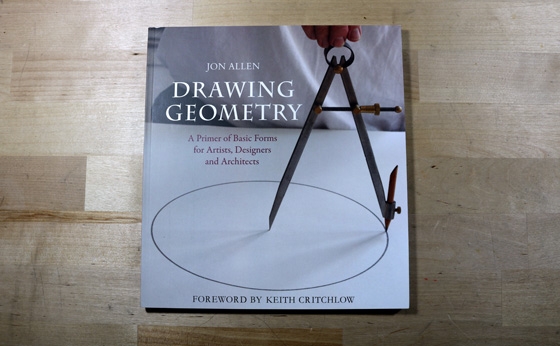
Drawing Geometry: A Primer of Basic Forms for Artists, Designers, and Architects, by Jon Allen (2007) "Geometry is both elegantly simple and infinitely profound. Many professionals find they need to be able to draw geometric shapes accurately, and this unique book shows them how. It provides step-by-step instructions for constructing two-dimensional geometric shapes, which can be readily followed by a beginner, or used as an invaluable source book by students and professionals."
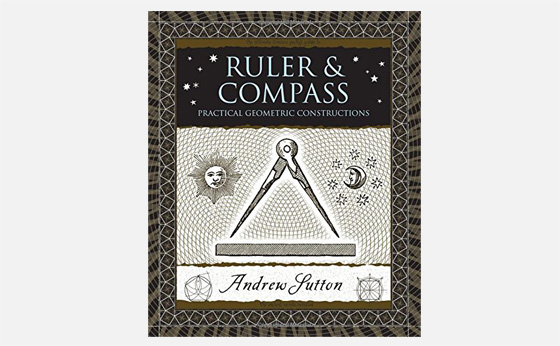
Ruler and Compass: Practical Geometric Constructions, by Andrew Sutton (2009) "From the practical fundamentals to the more demanding, this pocket-sized book introduces the origins and basic principles of geometric constructions using ruler and compass, before going on to cover dozens of geometric constructions! Since the earliest times mankind has employed the simple geometric forms of straight line and circle. Originally marked out by eye and later using a stretched cord, in time these came to be made with the simple tools of ruler and compass. This small book introduces the origins and basic principles of geometric constructions using ruler and compass, before going on to cover dozens of geometric constructions, from the practical fundamentals to the more demanding."
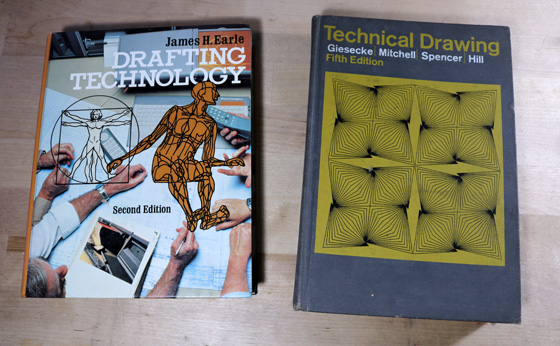
There is an abundance of drafting books to choose from, including older versions such as shown in the picture above detailing traditional hand-drawn 2D designs, to updated newer editions as the one this links to, which includes modern 3D CAD.

The Mandala Book: Patterns of the Universe, by Lori Bailey Cunningham (2010) "a visual symphony, filled with 500 stunning mandalic images from nature and civilization. Drawing from history, science, religion, and art, Lori Bailey Cunningham leads a journey that spans from prehistoric petroglyphs to Carl Jung, from tiny particles of matter to entire galaxies. She explains the concepts of mandalas, showing how they are at the root of life itself."
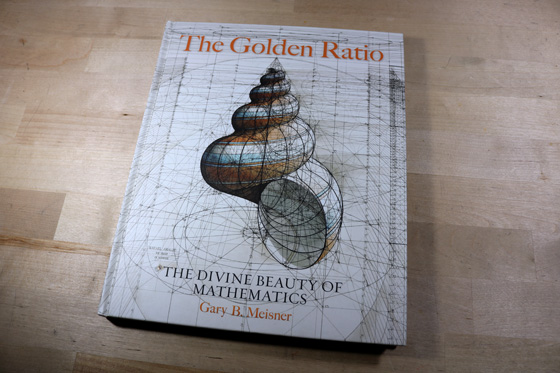
The Golden Ratio: The Divine Beauty of Mathematics, by Gary B. Meisner (2018) "The Golden Ratio examines the presence of this divine number in art and architecture throughout history, as well as its ubiquity among plants, animals, and even the cosmos. This gorgeous book - with layflat dimensions that closely approximate the golden ratio - features clear, enlightening, and entertaining commentary alongside stunning full-color illustrations by Venezuelan artist and architect Rafael Araujo. From the pyramids of Giza, to quasicrystals, to the proportions of the human face, the golden ratio has an infinite capacity to generate shapes with exquisite properties. This book invites you to take a new look at this timeless topic, with a compilation of research and information worthy of a text book, accompanied by over 200 beautiful color illustrations that transform this into the ultimate coffee table book."
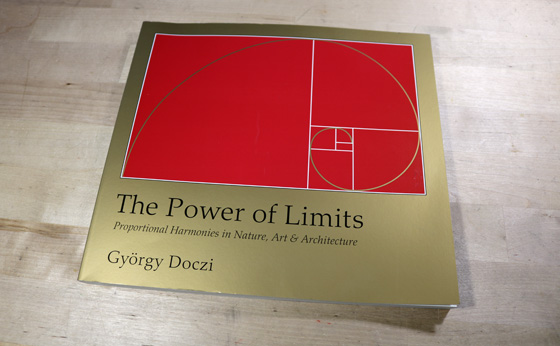
The Power of Limits: Proportional Harmonies in Nature, Art, and Architecture Paperback, by Gyorgy Doczi (2005) "One of the delights of life is the discovery and rediscovery of patterns of order and beauty in nature - designs revealed by slicing through a head of cabbage or an orange, the forms of shells and butterfly wings. These images are awesome not just for their beauty alone, but because they suggest an order underlying their growth, a harmony existing in nature. What does it mean that such an order exists; how far does it extend? The Power of Limits was inspired by those simple discoveries of harmony. The author went on to investigate and measure hundreds of patterns - ancient and modern, minute and vast. His discovery, vividly illustrated here, is that certain proportions occur over and over again in all these forms. Patterns are also repeated in how things grow and are made - by the dynamic union of opposites - as demonstrated by the spirals that move in opposite directions in the growth of a plant. "
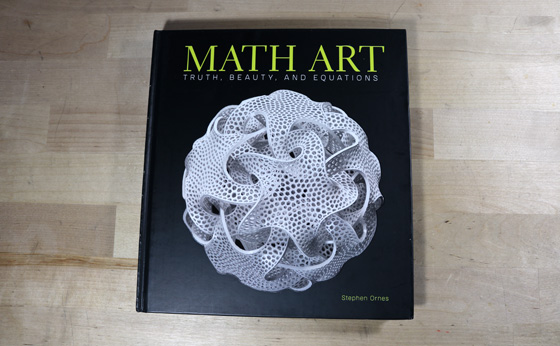
Math Art: Truth, Beauty, and Equations, by Stephen Ornes (2019) "From geometry in motion to the possibilities of pi, this stunning volume reveals how art has been inspired by the beauty and poetry of mathematical principles. The worlds of visual art and mathematics come together in this spectacular volume by award-winning writer Stephen Ornes. He explores the growing sensation of math art, presenting more than 80 pieces, including a crocheted, colorful representation of non-Euclidian geometry that looks like sea coral and a 65-ton, 28-foot-tall bronze sculpture covered in a space-filling curve. For each work, we get the artist's story followed by accessible and thought-provoking explanations of the mathematical concept and equations behind the art. From 3D-printed objects that give real form to abstract mathematical theories, to mystic fractals, to Andy Warhol as a solution to the Traveling Salesman Problem, these artworks embody some of strangest, most beautiful relationships among numbers and across dimensions."
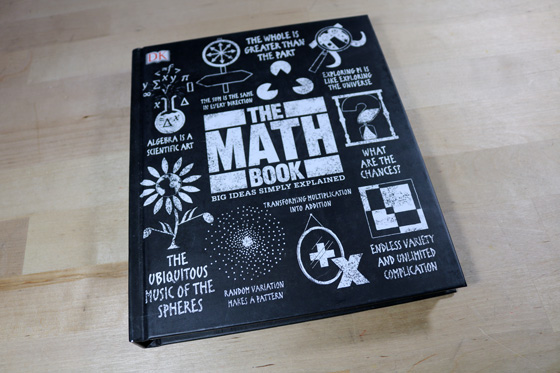
The Math Book: Big Ideas Simply Explained, by DK (2019) "See how math's infinite mysteries and beauty unfold in this captivating educational book! Discover more than 85 of the most important mathematical ideas, theorems, and proofs ever devised with this beautifully illustrated book. Get to know the great minds whose revolutionary discoveries changed our world today."

Quadrivium: The Four Classical Liberal Arts of Number, Geometry, Music, & Cosmology "Composed of six successful titles in the Wooden Books series-Sacred Geometry, Sacred Number, Harmonograph, The Elements of Music, Platonic & Archimedean Solids, and A Little Book of Coincidence: The quadrivium-the classical curriculum-comprises the four liberal arts of number, geometry, music, and cosmology. It was studied from antiquity to the Renaissance as a way of glimpsing the nature of reality. Geometry is number in space; music is number in time; and cosmology expresses number in space and time. Number, music, and geometry are metaphysical truths: life across the universe investigates them; they foreshadow the physical sciences.
Designa: Technical Secrets of the Traditional Visual Arts "From the geometric patterns of Islamic art and design to the swirling floral motifs of Celtic art, Designa brings together six elegant and insightful short volumes from the Wooden Books series on art and design including Islamic Design, Celtic Pattern, Curves, The Golden Section, Symmetry, and Perspective. Lavishly illustrated with engravings, woodcuts, and original drawings and diagrams, Designa will inspire readers of all ages to take an interest in the interconnected knowledge of art and design from different cultures throughout the world."
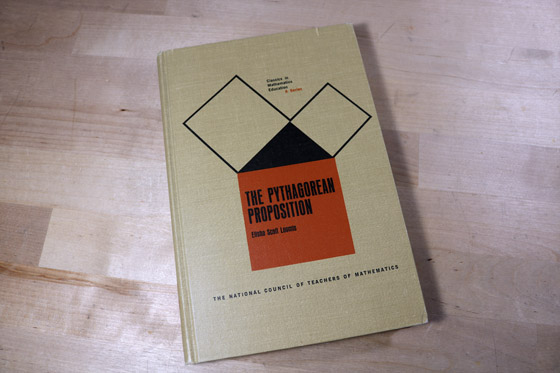
The Pythagorean Proposition, by Elisha S. Loomis (1928) "A collection of 370 different proofs of the Pythagorean theorem. The proofs include those given by Euclid, by Bhaskara (the Indian mathematician) by the Chinese, by modern mathematicians such as Legendre, Leibniz, and Huygens, by a former president of the United States (James Garfield), and several proofs discovered by high school students."
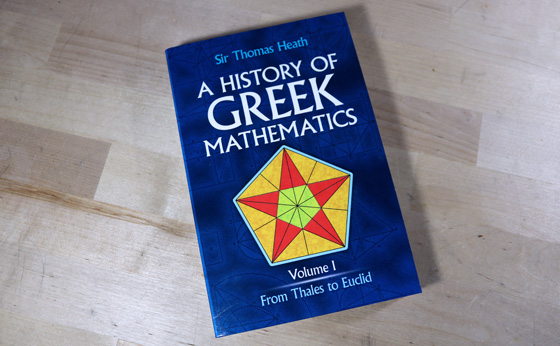
A History of Greek Mathematics, Vol. 1: From Thales to Euclid, by Sir Thomas Heath (1921) "The perspective that enabled Sir Thomas Heath to understand the Greek genius - deep intimacy with languages, literatures, philosophy, and all the sciences - brought him perhaps closer to his beloved subjects and to their own ideal of educated men, than is common or even possible today. Heath read the original texts with a critical, scrupulous eye, and brought to this definitive two-volume history the insights of a mathematician communicated with the clarity of classically taught English."
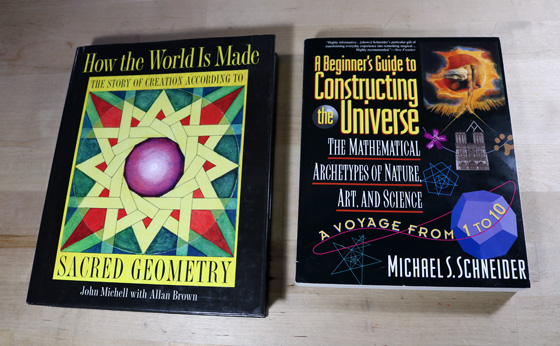
How the World Is Made: The Story of Creation According to Sacred Geometry, by John Michell (2009) "In How the World Is Made John Michell explains how ancient societies that grasped the timeless principles of sacred geometry were able to create flourishing societies. His more than 300 full-color illustrations reveal the secret code within these geometrical figures and how they express the spiritual meanings in the key numbers of 1 through 12. For example, the number 8 and its octagon are symbols of peace and stability, the holy 7 and its seven-sided figure are connected to the world-soul. He identifies the various regular shapes and shows their constructions; their natural symbolism; their meetings, matings, and ways of breeding; and their functions within the universal order. Some are musical and structural, others relate to life and humanity. In the process of making these discoveries, Michell helps us see the world in a new light."
A Beginner's Guide to Constructing the Universe: Mathematical Archetypes of Nature, Art, and Science, by Michael S. Schneider (1995) "Discover how mathematical sequences abound in our natural world in this definitive exploration of the geography of the cosmos. You need not be a philosopher or a botanist, and certainly not a mathematician, to enjoy the bounty of the world around us. But is there some sort of order, a pattern, to the things that we see in the sky, on the ground, at the beach? In A Beginner's Guide to Constructing the Universe, Michael Schneider, an education writer and computer consultant, combines science, philosophy, art, and common sense to reaffirm what the ancients observed: that a consistent language of geometric design underpins every level of the universe, from atoms to galaxies, cucumbers to cathedrals. Schneider also discusses numerical and geometric symbolism through the ages, and concepts such as periodic renewal and resonance. This book is an education in the world and everything we can't see within it."
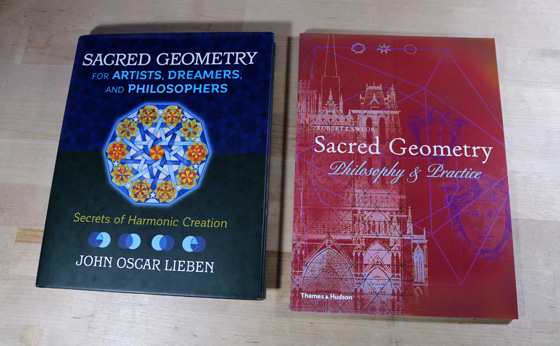
Sacred Geometry for Artists, Dreamers, and Philosophers: Secrets of Harmonic Creation, by John Oscar Lieben (2018) "We are in the midst of a revival of an ancient way of looking at the world--an approach that enabled great civilizations of the past to bring forth inventions of great beauty and power. This school of thought--harmonics--envisioned the natural world and the solar system as an interlocking matrix of harmonious numbers, perfectly woven into the creative fabric of life and the surrounding universe. Exploring the art and science of harmonics, John Oscar Lieben shows how to create harmonious forms using the ancient tools of number, geometry, and musical tone--an approach that resonates with nature's own ways of creation. He demonstrates many practical applications that result from the study of harmonics, providing analyses of ancient sculpture and architecture, as well as original examples of building floor plans, pottery figures based on planetary proportions, gardens based on harmonic principles, and ceremonial spaces that honor cosmic harmonies and sacred geometric relationships. "
Sacred Geometry: Philosophy & Practice, by Robert Lawlor (1982) "An introduction to the geometry which, as modern science now confirms, underlies the structure of the universe. The thinkers of ancient Egypt, Greece and India recognized that numbers governed much of what they saw in their world and hence provided an approach to its divine creator. Robert Lawlor sets out the system that determines the dimension and the form of both man-made and natural structures, from Gothic cathedrals to flowers, from music to the human body. By also involving the reader in practical experiments, he leads with ease from simple principles to a grasp of the logarithmic spiral, the Golden Proportion, the squaring of the circle and other ubiquitous ratios and proportions."
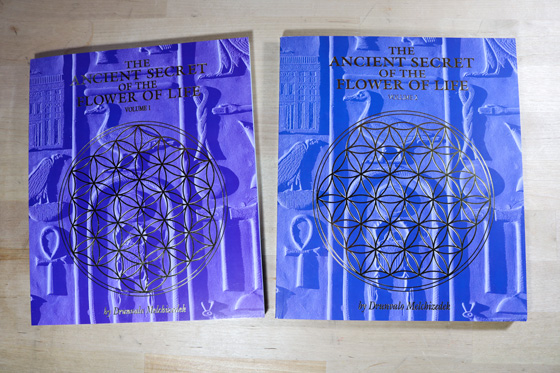
The Ancient Secret of the Flower of Life, by Drunvalo Melchizedek (1999) "Once, all life in the universe knew the Flower of Life as the creation pattern -- the geometrical design leading us into and out of physical existence. Then from a very high state of consciousness, we fell into darkness and forgot who we were. For thousands of years, the secret was held in ancient artifacts and carvings around the world and encoded in the cells of all life. Now we are rising up from that sleep, shaking old, stale beliefs from our minds and glimpsing the golden light of this new dawn streaming through the windows of perception. This book is one of those windows. "
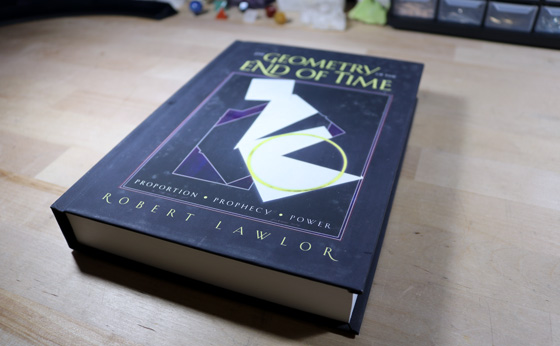
The Geometry of the End of Time, by Robert Lawlor (2015) "This text explains how the patterns of the Yugas hace predicted the rise and fall of ideas, social movements, wars, and countries as well as how this knowledge has been used by secret societies to exploit and steer the course of world history."
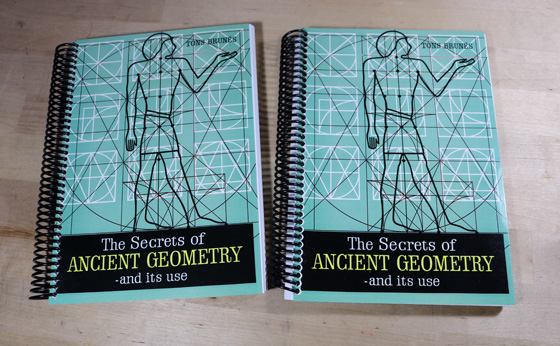
The Secrets of Ancient Geometry and its use, by Tons Brunes (1967) "with hundreds of geometrical diagrams, this book develops a complete theory of the origin and development of Sacred Geometry through the ages"
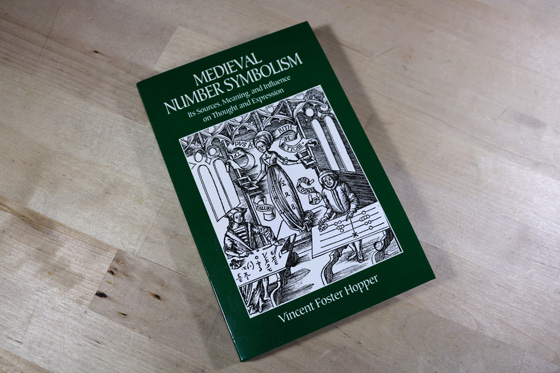
Medieval Number Symbolism: Its Sources, Meaning, and Influence on Thought and Expression, by Vincent Foster Hopper (1938) "For Dante and other people in the Middle Ages, numbers had a different set of connotations than they do for moderns. The symbolism of numbers was both widespread and profoundly ingrained in the culture. In this classic study, a noted scholar reveals how deeply rooted in medieval thought was the consciousness of numbers, not as mathematical tools, nor yet as the counters in a game, but as fundamental realities, alive with memories and eloquent with meaning."

The Theology of Arithmetic: On the Mystical, Mathematical and Cosmological Symbolism of the First Ten Numbers, by Iambilichus, translated from 4th century Greek by Robin Waterfield (1988) "Attributed to Iamblichus (4th cent. AD), The Theology of Arithmetic is about the mystical, mathmatical and cosmological symbolism of the first ten numbers. Its is the longest work on number symbolism to survive from the ancient world, and Robin Waterfield's careful translation contains helpful footnotes, an extensive glossary, bibliography, and foreword by Keith Critchlow. Never before translated from ancient Greek, this important sourcework is indispensable for anyone intereted in Pythagorean though, Neoplatonism, or the symbolism of Numbers."
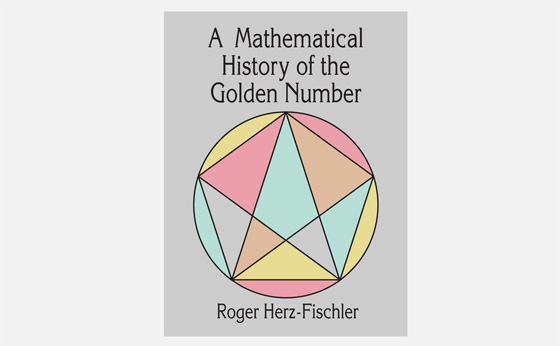
A Mathematical History of the Golden Number, by Roger Herz-Fischler (1987) "The first complete, in-depth study of the origins of division in extreme and mean ratio (DEMR)-"the Golden Number"-this text charts every aspect of this important mathematical concept's historic development, from its first unequivocal appearance in Euclid's Elements through the 18th century. Readers will find a detailed analysis of the role of DEMR in the Elements and of its historical implications. This is followed by a discussion of other mathematical topics and of proposals by modern commentators concerning the relationship of these concepts to DEMR. Following chapters discuss the Pythagoreans, examples of the pentagram before 400 H.C., and the writings of pre-Euclidean mathematicians"
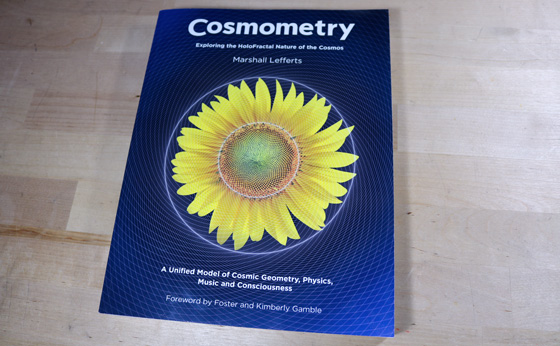
Cosmometry: Exploring the HoloFractal Nature of the Cosmos, by Marshall Lefferts (2019) "Throughout nature we can see patterns, structures, processes and systems that reflect an underlying order of energy dynamics that literally in-forms the observable universe across all scales. Cosmometry is the study of this underlying order, wherein cosmic geometry, unified physics and the harmonic system of music are seen as three lenses through which to view one phenomenon - universal dynamics of energy and matter manifesting in physical form and flow. Synthesizing foundational theories of Buckminster Fuller, David Bohm, Nassim Haramein, Foster Gamble, Richard Merrick and others, Cosmometry - Exploring the HoloFractal Nature of the Cosmos presents a new look at age-old questions about the universe we live in, and the origin of consciousness with which we are aware of it. With over 400 color images and illustrations, and bridging personal observation, scientific research, spiritual insight and experiential knowing, Cosmometry offers a guided exploration into new understandings about the fractal-hologramic nature of the unified field from which everything emerges in a seamless integrity of wholeness."
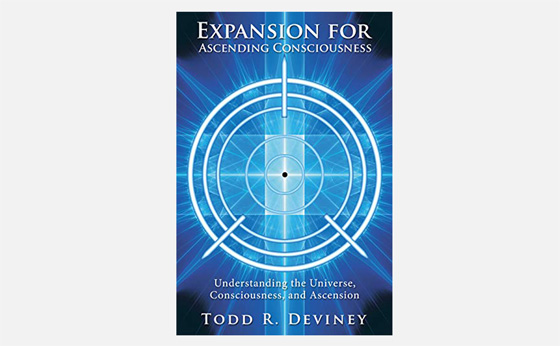
Expansion for Ascending Consciousness: Understanding the Universe, Consciousness, and Ascension, by Todd R. Deviney (2018) "The awakening begins in an ascending consciousness with an unspecified dissatisfaction regarding the established rules and assumptions. You cannot identify the irritation, but it feels as if there should be something more. Because of this, you begin to look for answers outside of the normal channels and your awakening commences. The messages for awakening are as diverse as their sources because they are designed to reach different levels of consciousness - yet the truth is always the truth, though the form it takes may vary. Expansion for Ascending Consciousness is a cooperative effort to provide a basis for understanding consciousness and the energy construct we exist within. The intent is to remove the mysticism surrounding consciousness and embodied experience. While complex and miraculous in its design, consciousness is scientifically explainable and the foundation upon which the universe has been created. As an ascending collective, you have reached a time in your development where mysticism has outlived its usefulness. Truth comes in many forms, and thus the information you gravitate to at any given moment is dependent upon what resonates with your current level of awakening. At a point in this process you will look back upon the information you have accumulated and see that each one was a step that incrementally raised your awareness. Expansion for Ascending Consciousness contains the next step along this path of ascension."
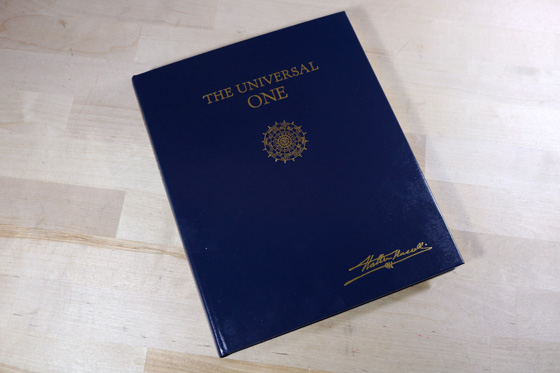
The Universal One, by Walter Russell (1927) "A "must" for the serious student of Russell science and philosophy, The Universal One is Walter Russell's first expression of his new Cosmology explaining the Mind-centered electromagnetic universe. Russell later revised some of the content of The Universal One in The Secret of Light and A New Concept of the Universe. Students of the Russell science should be aware of the historic sequence of Walter Russell's books of science, and note the various changes in details which Walter Russell himself made. Nikola Tesla told Walter Russell to lock his cosmology in a sepulcher for a thousand years because mankind was not ready for it . Though a century or more ahead of its time, The Universal One, uniting spiritual Cause and scientifically observable Effect in a seamless whole, is now appealing to the many people - scientists and laymen alike - who are examining the nature of science and consciousness."
|
|
...
|
|
|
|
